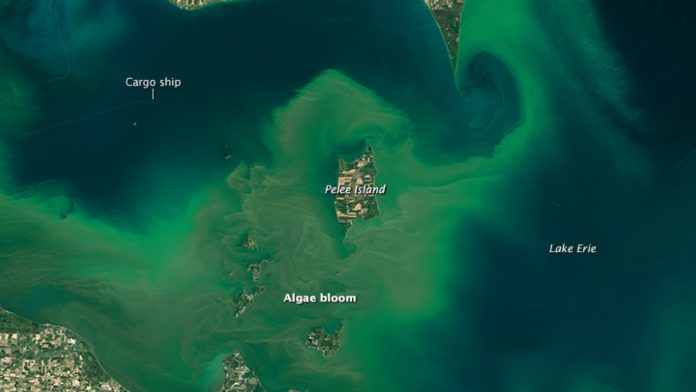A simple definition of a watershed is a drainage area, a body of water that rainwater drains to. Watersheds can be small such as a local stream, and small watersheds are part of larger watersheds.
The watersheds I work in are in the Muskingum River Watershed which is also in the Ohio River Watershed. What happens in those smaller watersheds impact the larger rivers that do not even flow through the counties I work in.
Eventually, everything that happens in those counties impacts the Gulf of Mexico through the Mississippi River. The nutrients that are deposited into the ocean at the mouth of the river trigger a series of events that lead to dead zones.
Dead zones are a naturally occurring event but are proving to be an increasing issue. Dead zones are caused by excess nutrients, so it makes sense that if we increase the nutrients, the dead zones will grow. The Mississippi River dead zone can cover thousands of square miles. Dead zones are areas that have very low or no oxygen. This has a huge impact on marine life, as many organisms cannot survive under such conditions.
The complicating factor in reducing dead zones is that the contributing issues begin at the top of the watershed and compound all the way to the mouth of the river thousands of miles away.
Local impact
Sometimes though, our actions in our local watersheds can have consequences in those local watersheds. An example of this would be a manure or fertilizer runoff or spill into a stream that causes a fish kill. Or the removal of vegetation on stream banks that causes increased erosion, or even increased nutrient load causing algal blooms.
Often though it is little impacts that can compound and lead to issues downstream, out of sight out of mind issues that may not even seem related to upper watershed impacts. There are many things that help to reduce pollution, vegetated buffer strips, proper application of fertilizers and pesticides, livestock exclusion fencing and no till and cover crop plantings.
But, to me, the easiest and the best place to start, is to be aware of where you are in the watershed. Are you near a stream, uphill of a stream? If you wash your vehicle in your driveway, where will the soapy water go? Will your compost pile, leaf pile, manure pile, dirt pile be washed into a stream with a heavy rain? Where will the litter on the street or in a ditch go?
If we are conscious of our decisions in relation to where water is, and where water goes, we can start to make better decisions for the areas we live in. Sometimes I think the term watershed may seem abstract, and not something we think about on a daily basis. But we all live in watersheds and we need good water quality.
Downstream effect
Everything that enters a stream, visible or not, has an impact somewhere. Some pollutants impact a local area immediately, such as spills, and others accumulate and have greater impacts downstream, in lakes, or eventually the ocean.
We see some of these impacts in the form of harmful algal blooms, degraded habitats and even negative impacts to drinking water.
So I encourage you today to give a little extra thought to your local watershed and maybe make a choice to be proactive in the health of your watershed. It can be as simple as picking up a bag of litter or choosing to move an activity away from the stream. For larger projects such as exclusion fencing, manure storage, stream improvements or restoration, no-till and cover crop plantings, your county Soil and Water District can supply resources and may have programs to help you achieve your conservation goals.
“Water has a voice. It carries a message that tells those downstream who you are and how you care for the land.”
— Bernie McGurl, Lackawnna River Association













